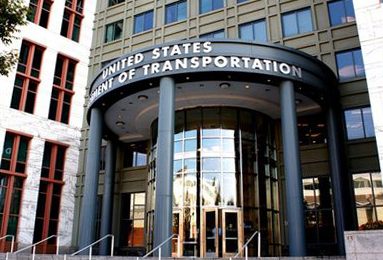April 27, 2017
 Yesterday, the U.S. Department of Transportation issued an unexpected rule in the Federal Register that centralizes
Yesterday, the U.S. Department of Transportation issued an unexpected rule in the Federal Register that centralizes
authority over government affairs and public relations for all USDOT modal administrations in the Secretary of Transportation’s office, a de jure demotion of the staffs in the modal administrations who address those functions.
The rule issued yesterday amends part 1 of title 49 of the Code of Federal Regulations (the part that defines the functions and duties of senior personnel). To isolate what just happened, here is §1.35, which defines the duties of the Assistant Secretary of Transportation for Governmental Affairs, as it existed before yesterday, and with the language added yesterday in bold underlined type:
§1.35 Assistant Secretary for Governmental Affairs.
The Assistant Secretary for Governmental Affairs serves as the Department’s primary point of contact for Congressional offices, as well as State and locally elected officials; works with other departmental offices to ensure that Congressional mandates are fully implemented by the Department; and works with the White House, other Federal agencies, and Congress to fulfill the Department’s legislative priorities. The Assistant Secretary coordinates congressional and intergovernmental activities with governmental affairs offices in the Operating Administrations and is the final authority on governmental affairs issues within the Department. The Assistant Secretary participates with each Administrator in the hiring decisions (other than in the Federal Aviation Administration) and performance reviews of the Operating Administrations’ Directors of Governmental Affairs. The Assistant Secretary supervises the Deputy Assistant Secretary for Tribal Government Affairs who plans and coordinates the Department’s policies and programs with respect to Indian tribes and tribal organizations.
The new rule also a similar change in 49 CFR §1.46 relating to the duties of the USDOT Director of Public Affairs, giving the Director (who is named by the Secretary and, unlike the Assistant Secretary for Governmental Affairs, does not have to be confirmed by the Senate) authority to participate in the hiring decisions for all Directors of Public Affairs in the modal administrations.
This begs the question: how much will Secretary Chao restructure the way political appointees (who are limited to a total of 110 by law) are distributed throughout DOT and its modal administrations? The 2016 Plum Book indicates that at the end of the Obama Administration, USDOT had 30 Schedule C’s, 33 non-career appointments, five statutorily excepted appointments (at the FAA) and five temporary appointments (in addition to the 18 Presidential appointments that must be confirmed by the Senate and the two direct Presidential appointees who don’t have to be confirmed). That totals 93, leaving another potential 17 appointments that either weren’t used or weren’t printed in the Plum Book.
But at several modal administrations (FMCSA, FRA, FTA, MARAD, PHMSA) the head government affairs and public affairs jobs were combined, begging the question: what happens when the Assistant Secretary for Governmental Affairs and the USDOT Director of Public Affairs disagree on who is to be hired? Or will the new Administration split up those jobs?

 Yesterday, the U.S. Department of Transportation issued an unexpected
Yesterday, the U.S. Department of Transportation issued an unexpected 

